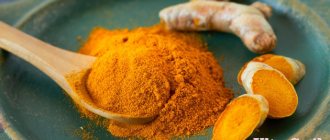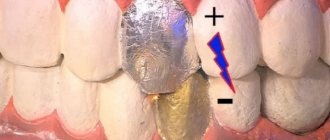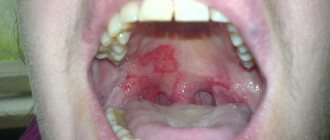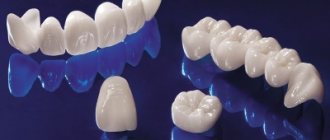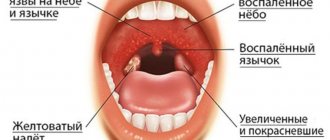March 15, 2020 Last revised: December 17, 2020 Oral diseases
Properly prepared sea buckthorn oil that has not expired has a bitter-oily soft aroma, a slightly sour taste and should not contain a large amount of sediment at the bottom. How is sea buckthorn oil used for stomatitis? Methods of treatment and mechanism of action of the drug.
Stomatitis
During this disease, the oral mucosa suffers. On the inner surface of the cheeks, on the gums, palate, on the tongue. It looks like swelling of the mucous membrane and small ulcers, which over time, in the absence of treatment or exacerbation, can merge into large ones.
There are several reasons:
- Allergic - with an attack by lymphocytes of the immune system on unidentified irritant molecules.
- Vesicular is a contagious form of stomatitis caused by RNA viruses.
- Herpetic. Another contagious form, albeit with less virulence. This form is treated with Acyclovir.
- Traumatic.
- Ulcerative.
- Catarrhal – caused by poor or complete lack of oral hygiene.
Sea buckthorn oil
A product obtained by squeezing sea buckthorn berries. Moreover, to obtain oil, either the whole berry or just the seed can be used - beneficial fatty acids are found in any part of it.
For medicinal purposes, cold-pressed oil is mainly used, as it is the most valuable organoleptically, since all biologically active substances are preserved in it without destruction. It is usually dark orange in color, as opposed to the yellow-orange stone fruit used more in the food industry, or the red-brown hot-pressed stone fruit, which is better suited for cosmetic purposes.
An alternative in action
The medicinal effect is reduced to frequent rinsing or lubricating the oral cavity with Lugol's or Furacilin solutions, Hexoral, Ingalipt or Stomatidin sprays, treatment with Viferon, Cholisal, Kamistad, Lidochlor gels. All these means can be varied, achieving disinfection of the mucous membrane and gradual attenuation of the process.
But they, like any medicinal form, have a significant drawback - possible contraindications, and in a very wide range, and frequent allergic reactions.
Oil preparations always act more gently than aqueous or alcoholic medicinal solutions. For sea buckthorn oil this statement is 100% true. Its unique organoleptic properties allow it to treat wounds in the mouth with surgical precision, disinfecting them and alleviating symptoms.
Compound
- Vitamin C. A vitamin that is directly involved in the metabolic processes of the body. Regulator of carbohydrate and lipid metabolism, responsible for the synthesis of steroids and nucleins. One of the best direct-acting anti-inflammatory and immune agents.
- Vitamin E. With its deficiency, a decline in all protective functions and a slowdown in tissue regeneration are inevitable.
- Vitamin K. If there is a deficiency of this vitamin, the hematopoietic functions of the body drop sharply, the membrane of produced red blood cells becomes thinner, weaker, and the number of lymphocytes increases. The vitamin also reduces the risk of hemorrhages in the mucous membranes, strengthening the walls of blood vessels.
- B vitamins. With a lack of B vitamins, the regeneration of damaged organs and tissues slows down, and all major systems become unbalanced.
- Carotene, or provitamin A. Carotene gives sea buckthorn fruits an intense yellow or orange color; it is also called a precursor of vitamin A. It is an active participant in metabolism and the healing process of any wounds.
Sea buckthorn oil is also rich in vital health regulators: triterpene and polyunsaturated acids, bioflavonoids and folic acid, microelements in the form of manganese, iron, silicon.
Methods for treating stomatitis with sea buckthorn oil
Despite the generally accepted hypoallergenic nature of sea buckthorn oil, the reaction to it still needs to be checked, especially for city dwellers living in conditions where industrial emissions occur.
This is done simply: apply a smear to clean skin of the wrist and wait 10 minutes. If after removing the oil there is no redness in this area, you can use it in all forms.
- Saturate a gauze swab with sea buckthorn oil and, without exerting much effort, wipe the surface of the gums, inside the cheeks, palate and tongue. The procedure is done 4-5 times a day.
- Oil application method. Using this method of treatment, an oil-saturated gauze swab is distributed along the entire length of the dentition so that it covers both the outer side of the cheeks and the inner side.
- Rinsing the mouth with sea buckthorn oil. With this method, you need to take a full teaspoon into your mouth and forcefully drive it through your teeth for 5 minutes. You can’t take it longer, because the food enzymes contained in saliva will begin to break down sea buckthorn oil, and its medicinal value will decrease.
After the procedures, it is not recommended to eat for at least half an hour, so as not to irritate the mucous membranes and not negate the healing effect of the drug.
Rules of application
To protect the patient from undesirable consequences, before using sea buckthorn oil, you need to prepare the oral cavity for the procedure and conduct an allergy test. Let's talk about this in more detail. This article will tell you about toothpastes for bleeding gums.
Carrying out an allergy test
A drop of oil, 1 centimeter in diameter, is applied to the wrist. Usually choose the inner side of the arm,
so that in the event of an allergic reaction, the affected area is not noticeable. After an hour, you need to inspect the drop. If irritation, inflammation, swelling or redness are not noticed, the product can be used. If symptoms appear, it is better to abandon this product, otherwise the condition may worsen.
Preparing the oral cavity before using the product
- The patient should refuse to eat an hour before the procedure. It's better to have a snack in advance.
- The oral cavity must be rinsed thoroughly and dried. If stomatitis has acquired a herpetic form, then the sores should be wiped dry and only then proceed with the procedure.
- The product must be at room temperature. A cold composition will cause discomfort, and a hot one will burn the mucous membrane.
- After the procedure, you cannot eat or drink liquids for another hour.
How to choose the right one
When purchasing sea buckthorn oil in pharmacies, check the region where the fruit is grown and where the medicine is prepared from it. They must match, otherwise the content of vitamins and biologically active substances in such oil may be reduced. The fact is that when transported over long distances, and even under inappropriate conditions, many beneficial substances in sea buckthorn oil are destroyed.
The bottle must be made of dark brown glass - the vitamin C contained in the oil is destroyed by light.
If there is a note that the product is made from selected varieties of sea buckthorn grown specifically for food and medicinal purposes, that’s generally great. Altai is famous for such varieties, where they are not only cultivated, but production itself is concentrated there.
In addition to regular pharmacies, sea buckthorn oil can be purchased in specialized herbal pharmacies with their large selection of natural preparations, healing syrups and medicinal herbs. In such pharmacies it is guaranteed to be certified and fresh.
Homemade oil
You can make sea buckthorn oil yourself. To do this, take fully ripe, selected berries of an even yellow or orange color, without dark spots or damage to the skin. The berries are washed, dried well to remove the slightest trace of water, and the juice is squeezed out of them.
After standing for a long time, up to a week, in a dark place under a lid, oil will float to the surface of the juice. This type is the most valuable; it is suitable for treating stomatitis even in young children.
The cake remaining after squeezing the juice is dried in the oven, avoiding severe overheating, much less burning. Then they grind it into flour and fill this mass with refined and sterilized olive oil when heated to 60 degrees, and leave it for a couple of weeks.
During infusion, the mixture is stirred periodically, and after 14 days, filtered. Store in the refrigerator.
Cooking at home
In order not to worry about the quality of the product purchased at the pharmacy, you can make the oil yourself.
There are many different recipes. Select only ripe fruits and carry out the following manipulations:
- take care of the cleanliness of the berries by washing them with running water;
- dry them with a paper towel;
- squeeze the juice out of them, leave the cake;
- dry it in the oven;
- pour in oil (preferably olive) and leave for several weeks;
- Stir the mixture daily to ensure homogeneity;
- After 2 weeks, strain the liquid.
Pure oil is poured into a container and stored in a cool, dark place.
The second recipe will help in treating the child. A product prepared in this way is considered safe and most correct. Berries are prepared in the same way. The finished juice is placed in a cool place (a refrigerator or cellar is suitable). During cooling, the oil will appear on the surface, resembling a film. Carefully collect it in a special container; preferably store it in the refrigerator.
We suggest you read: Does diclofenac help with toothache?
Use for stomatitis in children
Children suffer from stomatitis much more often than adults. Their immune system has not yet fully developed, and there are problems with hygiene during children's games; children often put everything in their mouths.
It is precisely because the immune system is immature that it is most often recommended to use an alternative in the form of sea buckthorn oil for the treatment of childhood stomatitis - as a natural substance with a complete absence of artificial chemical components. In addition to being harmless, it also has a softening and analgesic effect.
Before treating your child's oral mucosa, ask him to rinse his mouth with warm water to remove food debris from his teeth and gums.
For wounds and ulcers, soak a cotton swab in oil and treat all affected areas with it 5-6 times a day.
If the child’s age allows him to rinse his mouth on his own, prepare him a solution with sea buckthorn oil. To do this, add 2 drops of oil to 100 ml of water, beat it all into an emulsion in a bottle with a stopper and give it to the child for intensive rinsing. The procedure is repeated every 2 hours.
Relief occurs after 2-3 procedures.
For stomatitis in infants
The risk of allergy from sea buckthorn oil is greatest in infants - due to their own undeveloped immune system. Therefore, if stomatitis occurs in an infant, then consultation with a pediatrician is mandatory!
If there is no negative reaction, you can either moisten the disc with oil and then apply it to the gums, or treat wounds and sores with a cotton swab.
Contraindications
Sea buckthorn oil in dentistry is practically safe, the only thing you should be wary of is individual hypersensitivity to the main elements of the composition, in other words, an allergy to sea buckthorn. Before using the product on your teeth and gums, be sure to conduct a trial test by applying the product to your wrist or elbow for a day. If a reaction occurs in the form of redness, rashes or itching, then the oil should not be taken, because after its use on mucous membranes, it can cause severe swelling of the throat or larynx.
Particular attention should be paid to children, because they experience allergic reactions more often than adults. Inform your healthcare professional about your desire to use the drug in question for therapy or preventive measures.
When painful ulcers and white plaque appear in the oral cavity, thrush is suspected. This is what people call stomatitis - a disease of an infectious nature. The attack can occur in childhood and adulthood and requires immediate treatment. Sea buckthorn oil for stomatitis provides positive dynamics after 2-3 home procedures.


